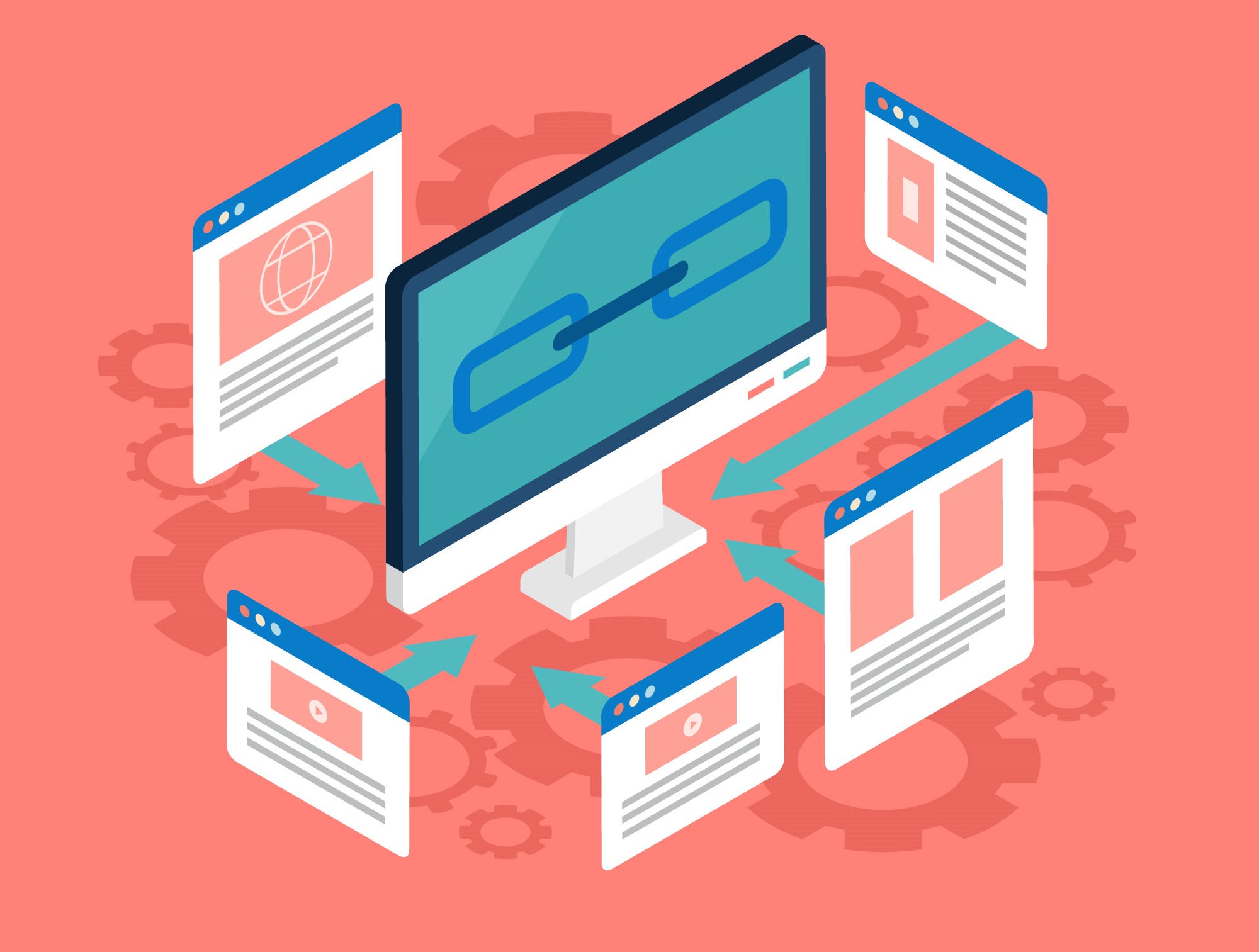If you want your website to appear in the top 3 results of Google, ignoring backlinks can become a major barrier to your SEO growth. In today’s competitive digital landscape, backlinks are not just a ranking signal but directly impact your site’s domain authority (DA), page authority (PA), link equity (link juice), and trust flow. High-quality backlinks make your content more credible and relevant in the eyes of search engines — which ultimately converts into better visibility and organic traffic.
In this guide, we will cover:
- What are Backlinks, and why are they beneficial for SEO?
- Their technical importance: DA, PA, referring domains, link juice, etc.
- How many types of backlinks are there, and which one should be used in which situation?
- Which backlinks should I avoid? What is the effect of spammy or toxic links?
Whether you are an SEO specialist, content marketer, small business owner, or web developer, this guide will create a strong backlink foundation for you that can bring long-term SEO results.
So, let’s start decoding the world of backlinks!
What are Backlinks?
A backlink serves as a connecting link pointing from one website domain to another domain. When another website links your content to its blog or page, that is called a backlink. Your content quality allows Google to understand that your information stands as both useful and reliable. Search engines consider backlinks to be vital SEO elements because sites with numerous reputable backlinks achieve better positions and improved domain authority and organic visitor traffic.
When a reputed site like Moz, Ahrefs, or Neil Patel links to your content, you get link juice — the SEO power that can take your site to the top results. But backlinks are not just a game of quantity — today, quality, relevance, and source also matter. You can track and enhance backlinks through three popular tools known as SEMrush, Moz, and Ahrefs.
In short, backlinks are the backbone of SEO — growing your site’s trust, traffic, and ranking over the long term.
Technical Explanation:
- Referring Domain: The domain from which the link is being received
- Anchor Text: The clickable text in which the link is embedded
- DoFollow vs NoFollow: DoFollow backlinks signal to Google, NoFollow does not
Importance of Backlinks
Backlinks are the backbone of SEO. When trusted websites link to your content, it signals to Google that your content is valuable. These signals boost your domain authority, trust level, and ranking potential.
Let’s break this down:
Domain Authority (DA)
DA is a score (0-100) that indicates how much your website is trusted. The higher the DA, the more value that backlink has.
Reference Tool: https://www.semrush.com/
Page Authority (PA)
PA is the SEO strength of a specific page, which tells how much that page can rank in Google results (score: 0-100). If a high PA page gets a backlink, then its SEO impact is higher.
Check PA using tools like Small SEO tools
Link Juice
The SEO value that is passed to your site through backlinks is called link juice. Do-follow backlinks pass link juice, which helps in ranking.
Referring Domains vs. Backlinks
If you link to the same domain repeatedly, you will have more backlinks but the referring domain will be the same. Multiple unique referring domains are more valuable for SEO.
Organic Traffic Growth
Quality backlinks increase your organic traffic without ads. High-authority links improve rankings and bring genuine visitors to your website.
What are the Varieties of Backlink Types?
There is not just one kind of backlink. Every backlink has its own SEO impact and use-case.
Let’s understand different backlink types:
Natural Backlinks
When someone links to your site without asking for it, considering your content valuable, it is a natural backlink. These backlinks are the most trusted and high-value for Google.
Example: A blogger used your research report for reference in his blog.
Manual Backlinks
You create these backlinks yourself by putting in a little effort — through outreach, guest posts, or networking. It takes a little time, but these links are relevant and safe for SEO.
How-to-do:
- Sending outreach emails
- Getting guest posting done on relevant blogs
Self-Created Backlinks
When you put your website link in a forum, comment or directory. If overused, Google may consider it spam and penalize it.
Warning: Do this only on trusted websites, otherwise ranking may go down.
Editorial Backlinks
When high-authority websites like Forbes or HubSpot naturally include your link in their content.
These backlinks are received organically and increase your credibility.
Example: Your blog was featured in an article on a reputed website.
Guest Post Backlinks
When you write a blog on another site and add a link to your site, you get a guest post backlink.
These backlinks give you both traffic and authority.
Recommended Sites:
Comment Backlinks
When you comment on a blog post, you add your site URL in the website field. If the blog is relevant and trusted, these backlinks help in indexing and visibility.
Note: Use only on high-quality and niche-related blogs.
Forum Backlinks
While answering questions on forums like Quora, Reddit, Stack Overflow, giving a link to your site. If the link is giving valuable information, then targeted traffic is also received.
Tip: Give links only where your content genuinely helps.
Directory Backlinks
You can list your business on directories, which include Justdial, Yelp, and Sulekha. These backlinks are very effective for local SEO.
Note: Business info (NAP) should be the same everywhere.
Profile Backlinks
When you create a profile on any website or platform and add your link there. These backlinks help in basic SEO, especially for startups and freelancers.
Examples:
Social Media Backlinks
Sharing your link through Twitter and LinkedIn, along with Instagram and Facebook, helps people discover your content. These are mostly NoFollow, but they help in branding and fast indexing.
Note: Direct SEO effect is low, but exposure is high.
Press Release Backlinks
When you share news of your business or product on media sites through press releases. If the news is genuine and interesting, then backlinks are received, and brand trust also increases.
Tip: Avoid spammy press releases — share only newsworthy content.
Sponsored Backlinks
When you publish paid content or articles on any site in which your link is there. Labeling this type of link “sponsored” is a must as per Google guidelines.
Use carefully: Paid links can have less SEO value if overused.
Resource Page Backlinks
Websites that create “Best Tools” or “Top Resources” lists can add your tool or content.
Such pages are trusted and provide long-term SEO benefits to your link.
Tip: Approach bloggers who create such curated lists.
Influencer Backlinks
If an influencer or YouTuber mentions your product/service in their content. This increases not just backlinks but brand trust, traffic, and conversions.
Types of Links to Avoid
Not every backlink is beneficial for SEO. Some backlinks can hurt your website’s ranking, and Google sometimes calls them toxic links. If your backlink profile contains too many spammy or manipulative links, Google can penalize your site or even remove it from indexing.
Here are some common harmful backlink types that you should avoid:
- Low-Quality Directory Submissions
Online free directories enable you to post links to your website easily. But if these directories are outdated, have low Domain Authority (DA), or are filled with spam content, these backlinks can be harmful to your SEO.
Google ignores these links as manipulative — or may issue penalties.
Pro Tip: Only submit to niche-relevant and trusted directories (like Justdial, Yelp, and Crunchbase).
- Link Farms
Link farms are a network of websites where random and unrelated backlinks are added to a single page — just for link building.
Google’s algorithms, like the Penguin update, specifically target them.
These backlinks are not only value-less but also send toxic signals that can take your ranking in reverse.
- Private Blog Networks (PBNs)
PBNs are artificially created blog networks that have a single purpose: passing link juice.
These blogs are owned by a single owner and mostly contain low-value or spun content. Google punishes these as a black-hat SEO technique.
Risk Alert: If Google identifies your PBN-based backlinks, you may receive manual action, which means a complete ranking drop.
- Spammy Blog Comments
Just writing “Nice post!” in the comments section and then adding your link — this is an old-school spam technique that does not work at all in today’s time.
Google marks these links as no-follow or ignores them. In bad cases, your site’s spam score also increases (Check the Spam Score – Moz).
Best Practice: Write meaningful comments, add value — only then the blog owner will approve your link.
- Irrelevant Guest Posts
If you are doing a guest post on a site that is not related to your industry, then the topical relevance of that backlink is zero.
Example: An IT company’s backlink to a food blog – no logic, no SEO benefit.
Google values topical authority – and devalues or ignores contextually unrelated links.
Summary
Backlinks are a kind of SEO backbone — without backlinks, it is difficult to rank your website on Google, no matter how informative your content is.
In this guide, we understood that a backlink is not just a link but a signal of trust, authority, and relevance. When you get quality backlinks from high DA websites, they improve your search engine rankings, organic traffic, and even crawl frequency. But caution is equally important.
Toxic backlinks such as spammy directories, PBNs, or irrelevant blog comments can damage your SEO metrics (such as DA and spam score). Backlink auditing requiring frequent evaluations should be performed using Ahrefs Backlink Checker along with SEMrush Backlink Audit Tool or Ubersuggest.
Final Takeaway:
- Always build natural, niche-relevant, and high-authority backlinks.
- Stay away from black-hat SEO techniques like link exchanges, low-DA forums, or fake guest posts.
- Focus on backlinks that match the context of your content — contextual relevance = maximum SEO value.
The more clarity and depth you create in your backlink strategy, the faster your domain will reach the top SERPs.
You can also read:



